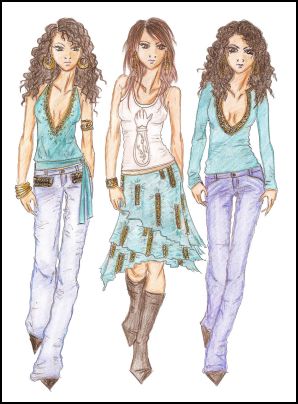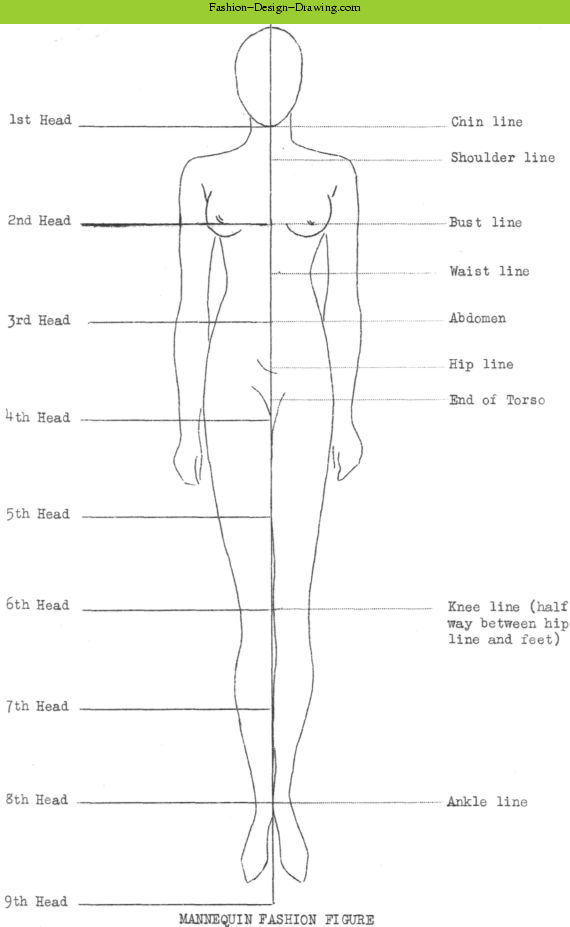By James Vincent
To draw a good fashion figure the body must first be placed under the clothes.
The figure given in this lesson is not nude, but is ready for underclothes, bathing suit, dress, suit, or a coat.
If you draw the complete figure carefully under every garment, you will have no trouble when drawing a bathing figure, or one in underclothes although busy artists merely sketch in the figure without finishing parts that do not show in the finished drawing. This is a saving of time for one who knows how.

The dress form conforms to the shape of the human figure.
Fashion figures vary as style changes, but figures seven (7) to eight (8) heads high are typical. The figure must be slim and graceful. If too stout it will not look right.

Proportions of The Figure
The figure measures seven (7) to eight (8) heads high.
The neck is about one-third (1/3) the width of the shoulders.

The waist measures less than the shoulders.
The legs join the body at the center of the figure.
The knees are less than half (J) way between this point and the feet.
From the shoulder to under the arm is one-half (i) head or less.
The waist is about one and three-quarter (If) heads down from the chin.
The arms bend opposite the waist, reaching down to the center of the figure, while the hands extend below this point.
The standing line (or fine of support) is an imaginary line from the pit of the neck to the standing foot. This line must be parallel with the edge of the paper.

The foot is about the length of the head.
The hand is as long as from the chin to above the eyebrows.
In this position the standing hip is high while the other one is low, both of the hips being above the middle of the figure.
The relaxed leg may be placed anywhere, but must extend from the hip and not from the knee, which would give it a knock-kneed appearance. See line of direction for the hips, also sketch of the nude hips.
If the figure were balanced evenly (on both feet) the line of support would fall between the feet. See Lesson XVIII.
The legs must join the body at the center and on the center line of the figure.
In the three-quarter view one sees considerably more of one side than of the other.
In fashions there are very few strictly full front faces, but many are almost full, being turned slightly.
The head is often turned in the opposite direction to the body; this lends grace to the figure.
When drawing hands, keep them the same size, also be careful to have the feet mates.

Drawing The Figure
Place the figure nicely on the paper; commence at the top, and swing in the correct oval. When this is done, measure down seven or eight heads to the standing foot, making a mark where the foot comes. Remember the standing line must pass through the ball of the foot. This takes but little time and can be easily erased if the figure does not fill the given space nicely.
If incorrect, begin again by redrawing the oval the proper size. Do not draw the features until the whole figure is swung in correctly.
Mark off the waist line one and three-quarter heads down, draw the shoulders, the bust, the standing hip, and one long line down to the standing foot, which is on the action side. Keep in mind all proportions and swing in the figure, using these spacings as guides.


![Validate my Atom 1.0 feed [Valid Atom 1.0]](valid-atom.png)






No comments:
Post a Comment